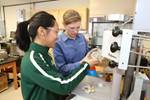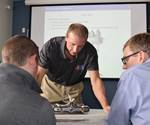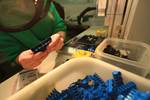Penn State Behrend Installs Consigned Zeres Injection Molding Machine
The university’s plastics processing lab will use the electric 101-ton Zhafir Zeres injection molding machine in hands-on coursework as part of its B.S. in Plastics Engineering Technology.
Absolute Haitian delivered the 101-ton ZE 900/210 Zhafir Zeres injection molding machine with 3.21-ounce shot size to the plastics processing lab in the Jack Burke Research and Economic Development Center at Penn State Behrend on July 9. Absolute Haitian, which is the exclusive distributor of Haitian and Zhafir injection molding machines in the U.S., first consigned a machine to Penn State Behrend back in 2008.
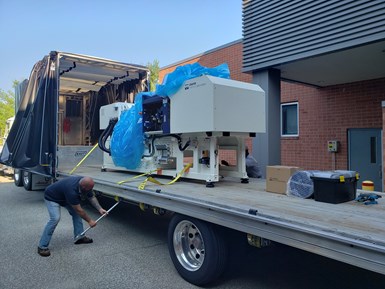
The newly consigned Zhafir Zeres injection molding machine arrived at Penn State Behrend from Absolute Haitian on July 9.
“We’re aware of the challenge the plastics industry faces in recruiting next-generation engineering talent,” Glenn Frohring, one of the owners of Absolute Haitian said in a release. “Providing access to current injection molding machine technology is one way we can help address this issue.”
The Zeres molding machine will be in operation in time for fall undergraduate classes, Plastics Training Academy classes, tutorials and conferences. Penn State Behrend’s B.S. in Plastics Engineering Technology is the only plastics-specific undergraduate degree program in the Penn State system, and one of only four accredited plastics engineering technology programs in the U.S., according to Brad Johnson, lecturer in engineering at Penn State Behrend.
The 10,000-ft2 lab includes injection molding, extrusion, blow molding, injection blow molding, thermoforming, compounding and blown film equipment. Currently, there are 11 injection molding machines in use, including presses from Arburg, Boy, Milacron (Cincinnati and Ferromatik), Engel, Husky, Sumitomo, and the former Demag and Van Dorn.
Special options on the ZE 900/210 include processing capability for MuCell microcellular foaming technology from Trexel and software for iMFLUX low-constant-pressure injection molding. The Penn State Behrend lab also has consignment agreements with Trexel and iMFLUX for these technologies. “Our goal was to expose students to the latest advancements in the commercial world of injection molding,” Johnson said.
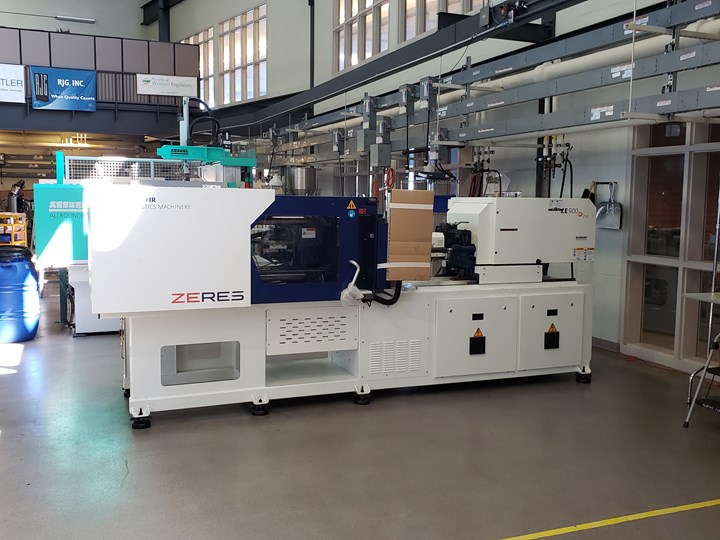
The Zhafir Zeres is one of 11 injection molding machines at Penn State Behrend’s 10,000-ft2 lab.
Related Content
-
Using Data to Pinpoint Cosmetic Defect Causes in Injection Molded Parts
Taking a step back and identifying the root cause of a cosmetic flaw can help molders focus on what corrective actions need to be taken.
-
A Systematic Approach to Process Development
The path to a no-baby-sitting injection molding process is paved with data and can be found by following certain steps.
-
Understanding the Effect of Pressure Losses on Injection Molded Parts
The compressibility of plastics as a class of materials means the pressure punched into the machine control and the pressure the melt experiences at the end of fill within the mold will be very different. What does this difference mean for process consistency and part quality?
